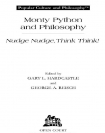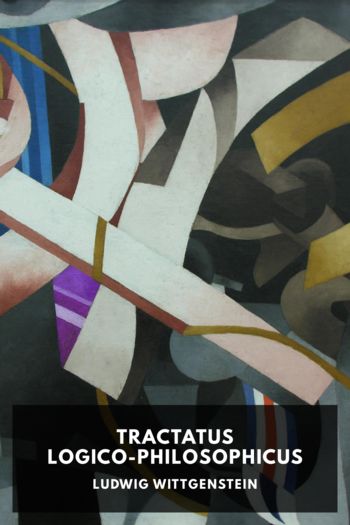Monty Python and Philosophy, Gary Hardcastle [portable ebook reader TXT] 📗

- Author: Gary Hardcastle
Book online «Monty Python and Philosophy, Gary Hardcastle [portable ebook reader TXT] 📗». Author Gary Hardcastle
The depth of a grammatical joke is the depth of philosophy. That accords nicely with the view outlined here.
The Overcoming of Philosophy through Comical Paralysis of Language
If we expand a bit upon Wittgenstein’s claim and employ it within the framework for thinking about philosophy already given, we will achieve an even more significant conclusion than we have achieved so far. Recall that in claiming Heidegger was speaking nonsense, Carnap was offering an objection to Heidegger. Carnap wished to overcome the nonsense Heidegger offered and philosophize correctly, that is, not nonsensically. Carnap called Heideggerian nonsense “metaphysics” and thus sought to “overcome metaphysics” by looking at the conditions under which language made sense and limiting philosophers to sense-making contexts of language use.
We have disrupted Carnap’s picture by claiming that philosophers generally make the sort of nonsense that Monty Python makes, except that philosophical nonsense is typically not funny. Thus, on our view, it would be misguided to try to turn philosophy into a sense-making activity. But, we can continue to ask the sort of question Carnap was asking: If philosophy is what we say it is, is it worth doing? Once we ask this question, we have a way of understanding Monty Python as performing the sort of anti-philosophical service that Wittgenstein was hoping to perform.
Wittgenstein said philosophy has the depth of a grammatical joke. “Grammar” is a word Wittgenstein used often, and he didn’t use it to mean the rules of language of the school books. Anything with structure has a philosophical grammar for Wittgenstein. Thus, Wittgenstein is saying that certain jokes reveal the structure of our lives in particularly striking ways and are, thus, deep. Jokes like this are the most significant in the corpus of Monty Python’s humor.101
Consider Michael Palin in the hijacking sketch again. Palin’s character bursts into the cockpit and demands that the pilot and co-pilot not make a move. Immediately, however, this demand becomes qualified in complicated ways: the pilot must move to fly the plane; certain bodily movements are involuntary and cannot be prevented; if the plane is moving then all their bodies are moving with it; and so on. The hijacker tries over and over again to come up with a precisely correct demand to make. Or, to take a different example, John Cleese, as Dennis Moore, endlessly qualifies his claim that he and his victims know that if they try to resist, one of his victims is dead for sure; Moore seeks the precisely true account, even as the account becomes so long and complicated that he interferes with what he is really trying to do.
Such skits have a genuine poignancy for us analytic philosophers. One can easily imagine a philosopher of action trying to come up with an analysis of “movement” which requires that he reproduce the hijacking sketch—indeed, I rather think I read such essays as a graduate student. One can recognize in Dennis Moore the striving for precision that analytic philosophers accept as their goal and that does, in fact, sometimes prevent them from acting usefully in the world. We now can understand these skits: Michael Palin and John Cleese are comedians. They know that they are putting us on. Their characters are, however, not comedians. Michael Palin’s character is a hijacker. But, he is not a hijacker of the sort we meet in the real world. The notion of movement needed for the appropriate understanding of “nobody move!” is taken for granted in the real world and goes without saying. Michael Palin’s character is a philosopher as hijacker, inhabiting a world in which philosophers hijack planes. Dennis Moore is philosopher as robber. Similarly for all those peculiar Python characters: the man who gestures during pauses in his speech to indicate that he is pausing and not finished speaking; the man dictating a letter who puts on antlers to indicate when he is dictating and not simply speaking. These are all examples of what philosophy would look like if done in the world of ordinary life.102 The absurd worlds examined in these sketches are worlds in which people genuinely exhibit the sorts of puzzlement philosophers claim to be clearing up. But these puzzles do not appear in our world.
These skits are strikingly similar to Wittgenstein’s writing at its very best. Throughout his On Certainty, for example, Wittgenstein places the philosopher G.E. Moore (1873-1958) into various real world scenarios in order to see if there was any sense to be made of Moore’s philosophical claims.103 The book is brilliant comedy as Wittgenstein imagines conditions under which Moore (or anyone) might significantly say, as Moore did in his “Proof of an External World” that “I know this is my hand.” Moore was practicing philosophy. In trying to place this philosophy into the world, Wittgenstein creates a panoply of Pythonesque scenarios. Try it for yourself: Point to your left hand with your right index finger and say with passion that you know that this is your hand. Under what conditions could you imagine doing that with sense ?104
Wittgenstein remains puzzled throughout On Certainty. He keeps trying to imagine scenarios in which someone asserts the things Moore asserts in his philosophy, and he keeps finding these claims to be, in such circumstances, “nonsense.” At a moment of illumination in the text (§463), he writes “This is certainly true, that the information ‘That is a tree’, when no one would doubt it, might be a kind of joke and as such have meaning.” This is as close as he comes to recognizing that what he is doing is a sort of comedic imagining: imagine a situation in which someone asserts a claim of a philosopher, and you are by that very fact in the realm of jokes.
Wittgenstein does not quite release himself from the hold of the idea that there must be some sense to “I know this is my





Comments (0)